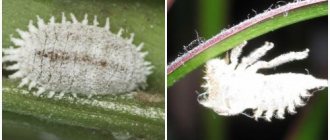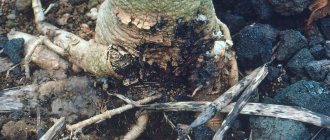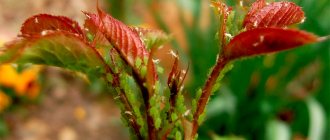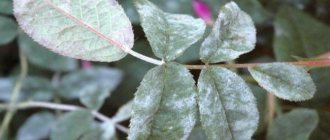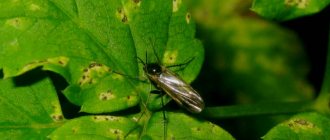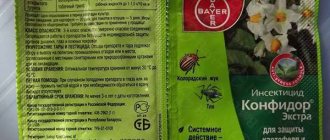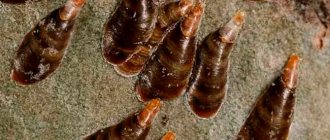Author: Elena N. https://floristics.info/ru/index.php?option=com_contact&view=contact&id=19 Category: Plant Pests Published: November 07, 2017Last edits: October 26, 2020
- Mealybug on grapes
Mealybugs (lat. Pseudococcidae), or pseudocushions, or felt insects, represent a family of hemipteran insects, including more than 2,200 species. Only 330 of them are found in Europe. The mealybug is a widespread insect that damages food, greenhouse and indoor plants, including cacti and succulents. People call these pests “hairy lice.”
Mealybug pest - description
The mealybug has a characteristic appearance and is large in size compared to other insects, but an inexperienced gardener may not immediately detect the onset of the invasion, which greatly complicates the fight against the pest.
The length of the mealybug can reach from 3 to 10 mm. Females and males differ significantly in appearance. The female pest has an oval body covered with white powdery wax, she has many short legs and long thread-like antennae. The scale insect larva is similar to the female, but smaller in size. And males are winged insects that resemble flies or mosquitoes. They do not have mouthparts, do not feed on plants and do not harm them.
What are the harms of mealybugs? These are sucking pests that feed on cell sap, which first leads to a slowdown and then to a complete cessation of plant growth and development. During their life, mealybugs secrete honeydew, or honeydew - a sweet and sticky liquid, which is a favorable environment for the development of various fungal diseases, in particular sooty fungus. The mealybug pest damages all organs - both ground and roots, and easily moves to neighboring plants.
- Flat mite / Brevipalpus
Of the many species, the most famous are the greenhouse plate, bamboo, citrus, seaside, grape, Australian grooved, root, bristle and Comstock bugs.
Damage caused by scale insects
Scale insects are a parasite of a wide range of plants, including ornamental and agricultural crops, and therefore cause damage to humans. With their proboscis they dig into different parts of the flora, drawing out juices from them. First of all, branches and young shoots suffer: they begin to decrease in diameter and become bent in places where insects and their larvae accumulate. If the infection is widespread, the plant dies.
Although adult females do not lead an active lifestyle and practically do not move, infection of neighboring plants occurs very quickly. The wind carries the larvae, which are microscopic in size, so all plantings in the area are in danger.
The oral apparatus secretes enzymes that have a phytotoxic effect, which additionally causes plant poisoning
Mealybug - preventive treatment
To prevent plants from being damaged by the pest, it is necessary to carry out the following preventive measures:
- regularly inspect the plants, especially the underside, leaf axils and buds ;
- promptly remove dried leaves, shoots, branches and buds that attract pests;
- observe the watering regime: moisture should be regular and sufficient;
- from time to time give indoor flowers a warm shower;
- place each new plant in quarantine , that is, keep it for at least a couple of weeks away from other indoor flowers and be sure to treat it with an insecticide for preventive purposes.
Mealybugs thrive at temperatures above 25 ºC and high air humidity, so in such conditions preventive inspection of plants should become frequent and mandatory.
Prevention of pest attacks
The best way to neutralize a parasite is to prevent it from appearing. It is recommended to periodically inspect the plants, carefully checking the leaves for the presence of white coating. If a new culture appears in the apartment, you should not immediately send it to the others. Protect newly arrived greenery for at least a month of quarantine.
It is advisable to regularly ventilate the room and keep it fresh, wash and treat the leaves with special products. This will not be able to completely prevent all possible options, but the fight against the disease will be much more effective. If an infection has already occurred, you should pay attention to common methods of eliminating mealybugs.
How to deal with mealybugs at home
Remedies for mealybugs (preparations)
How to treat plants against mealybugs? Almost all insecticides cope with this pest, but the best of them are considered to be:
- Admiral is a hormonal insecticide with enteric contact action (active ingredient is pyriproxyfen);
- Aktara for mealybug - an insecticide with enteric contact action (active ingredient - thiamethoxam);
- Actellik is a non-systemic organophosphate insectoacaricide with enteric contact action (active ingredient – pirimiphos-methyl). Due to its high toxicity, the drug is not recommended for use indoors;
- Apploud – insecticide (active ingredient – buprofezin);
- Bankol is an insecticide with enteric contact action (active ingredient – bensultap);
- Biotlin is a systemic insecticide with enteric contact action (active ingredient – imidacloprid);
- Bitoxibacillin is a biological preparation with insectoacaricidal properties to protect plants from pests;
- Inta-vir is a broad-spectrum insecticide with enteric contact action (active ingredient – cypermethrin);
- Commander is a systemic insecticide with enteric contact action (active ingredient – imidacloprid);
- Confidant is a systemic insecticide with enteric contact action (active ingredient – imidacloprid);
- Mospilan is a systemic insecticide with enteric contact action (active ingredient – acetamiprid);
- Tanrek is a broad-spectrum systemic insecticide with enteric contact action (active ingredient – imidacloprid);
- Fitoverm is an insectoacaricide of biological origin with enteric contact action (active ingredient - aversectin).
In addition to those described, there are other effective drugs against mealybugs , for example, Dantop (Ponche, Apache), Vertimek, Spark Double Effect and Calypso.
Mealybug on orchids
Mealybugs settle on ficus, dracaena and even cacti, but most often mealybugs appear on flowers - on orchids and violets, for example. When examining your indoor plants, the following symptoms will help you determine that this particular pest has settled on them:
- Colorado potato beetle: how to get rid of the pest
- the plant seems to be sprinkled with a loose powdery coating;
- the flower droops, its leaves lose turgor;
- Sticky spots of honeydew form on the external organs of the plant;
- the plant is covered with oval white insects.
If you find at least one of the listed signs, immediately begin saving the flower. How to deal with mealybugs on an orchid? First of all, it needs to be isolated so that the pests do not spread to other flowers. Dilute 2 g of green soap in 100 ml of water and very carefully wipe the ground organs of the orchid with this solution using a sponge or cotton pad. You need to penetrate into the cracks between the trunk and leaves with a brush soaked in the solution, since pests like to settle in hard-to-reach places. Don't forget to wash the leaves from the underside. After this, you need to spray the flower three times with an interval of 7-10 days with some folk remedy (infusions of tobacco or garlic, cyclamen decoction). Only treating the orchid three times will give the desired result, although it will seem to you that the pests have disappeared after the first spraying.
Among the chemical preparations against mealybugs on orchids, Fitoverm, Inta-vir and Bitoxibacillin are the most effective.
Mealybug on violets
For violets, the mealybug is the most difficult and insidious pest. It is difficult to track the moment when the scale insect appears on violets, since almost its entire cycle takes place underground. But even when the enemy is discovered, it turns out that fighting him is not so easy: he is ideally protected by the structural features of his body.
In the fight against mealybugs on violets, do not waste time trying to cope with the pest with folk remedies, but immediately use systemic insecticides. It is best to treat violets with Actellik: 2-3 sprayings at weekly intervals with a solution of 2 ml of the drug in 1 liter of water will destroy insects of all stages of development, except eggs. However, plant treatment should be carried out outdoors. If after this, scale insects appear on the violets, you will have to remove each plant from the pot, clean the roots from the soil, carefully treat the stem, axils of the lower leaves and the roots of the violet with a systemic insecticide, and then plant the plant in a fresh substrate.
Mealybug on cacti
If your cactus suddenly began to grow slowly, but you did not find any pests on it, this does not mean that there are none: you must definitely inspect the root system of the plant. Usually, scale insects suck the juice from the fresh growth of the tops of cacti and other succulents, but at the same time they can be found on the roots at the base of the stem and in the earthen coma. Signs of the harmful activity of mealybugs on a cactus may include deformation of young leaves and growth points, as well as brown or reddened marks - bite sites.
To kill mealybugs on cacti, you will need 3 treatments of the above-ground parts of the plants with a systemic insecticide at intervals of 10-15 days. During each spraying, it is necessary to spill the insecticide solution on the soil in which the cacti grow.
Hot water has a very effective effect on the pest: the plants are removed from the pots and washed under running water at a temperature of 45-50 ºC, mechanically removing pests from them and washing the roots from the ground. After washing, the cacti are completely immersed in a solution of a systemic insecticide for several hours, then dried and planted in a fresh, disinfected substrate. Of the chemicals used to combat scale insects on cacti, Decis, Apollo, Karbofos, Fufanon, Actellik, Sherpa and preparations based on imidacloprid have proven themselves well.
- Potatoes: treatment before planting
If there are few pests, it may be enough to treat the plant with garlic tincture. It is more convenient to do this with a cotton swab.
Mealybug on dracaena
Signs of damage to dracaena mealybugs are white bloom and spots of honeydew on the stems and leaves of the plant, loss of turgor in the leaves, the formation of brown spots on them and curvature of the stem. Mealybugs appear on the plant in conditions of too high humidity at temperatures above 25 ºC.
Mealybugs on dracaena need to be combated comprehensively, that is, in addition to treating the plant by leaves, it is necessary to disinfect the soil in which the dracaena grows. Among the chemical preparations in the fight against scale insects, Fitoverm has proven itself well, which should be used to treat the plant 4 times with an interval of 1 week. Confidor also copes well with the pest, but the most effective remedy is still Aktara: to spray dracaena on the leaves, use a solution of 4 g of the drug in 5 liters of water, and to treat the soil in a pot, you need to dilute 0.7 g of Aktara in 1 liter of water. However, whatever preparation you prefer, first try to wash off the insects from the plant or remove them using a cotton swab dipped in a soapy solution.
Reproduction and development of mealybugs
Species of scale insects found on indoor plants and in greenhouses are capable of reproducing without the participation of flying males. Females make from 2 to 4 clutches per year, containing from 300 to 2 thousand eggs. With such fecundity, they quickly occupy nearby flowers.
Reproduction of mealybug
Mealybugs breed on crops that prefer fertile soil. Females are inactive, moving to other places only when the struggle for survival with the grown offspring begins. They are easy to detect by their white fluff - loose fibers from the remains of the nesting site.
Egg
The female lays her eggs in a cocoon woven from secretions - a round or oval sac attached to the axils of the leaves or between the central veins of the leaf plate. The fiber mesh repels water well, but allows air to pass through. The eggs are translucent, with gelatinous contents, whitish on the outside. They come in a round shape or in the form of an ellipse.
Larva
After 5–10 days, almost the entire clutch hatches. Only at low temperatures do some eggs die. The larvae are very mobile and have high survival rates. It's difficult to fight them. They quickly leave the cocoon and spread throughout the plant. Because of their agility, the larvae are called “vagrants”; three pairs of legs are constantly in motion. Only during the molting period do individuals freeze. Light young pests are transferred to other flowers by drafts. They quickly adapt to a new place. Having matured, females lose activity, and in some species their legs disappear.
Fighting mealybugs in the garden
Mealybug on grapes
If the clusters on your grapes look pale and droopy, and in some places you notice clumps of plaque that look like pieces of cotton wool, inspect the bush more closely: it may be infested with mealybugs. The fight against them must begin immediately. And keep in mind: there are no grape varieties resistant to this pest, no matter what the sellers tell you.
Preventive treatment of grapes against scale insects is carried out in early May, when females lay eggs. For spraying on leaves, systemic preparations Aktaru, Actellik, Iskra Zolotaya, Mospilan or Confidor are used. If the mealybug has already taken root on your grapes, then one treatment will not solve the problem, but if you regularly use systemic insecticides for preventive purposes, then one spray may be enough.
If you have ants on your property, you should definitely get rid of them, as they spread scale insects throughout the garden in the same way as aphids.
In the fall, before preparing for winter, remove the old bark from the grape bush affected by scale insects and burn it along with the pests.
The fight against mealybugs on other garden plants is carried out using the same methods, including preventive measures.
Signs of plant infection
How can you tell if a houseplant has been attacked by a mealybug? It is useful for gardeners to know how the appearance and condition of plants changes.
7 signs of indoor plant infection:
- Clusters of white cobwebs appear on various parts of the plant, resembling cotton wool. Wax threads cover a small area, but there are a lot of mealybug nests on the plant.
- Powdery mildew (cloudy white drops) forms on the affected flower. A dangerous coating later develops in the affected area - gray rot.
- The stem becomes deformed, the flower grows slowly and loses its decorative properties.
- Mealybugs and larvae actively suck out the juices from the diseased plant, the leaves lose color, curl, and fall off.
- When examining the lower part of the leaves, root zone, flowers, and growth zones, small insects can be identified.
- Due to the activity of the parasite, the root system rots.
- When transplanting into a coma of earth, it is easy to identify white threads with a waxy coating and tiny pests.
Fighting mealybugs with folk remedies
If berry plants are slightly affected by mealybugs, it is better to use folk remedies that are less toxic than chemical insecticides:
- oil remedy: mix 2 tablespoons of olive oil in 2 liters of water and apply this emulsion to the above-ground parts of the plant with a spray;
- Horsetail Tincture: This drug is sold over the counter and is used as a diuretic and blood purifier. Treat plants with horsetail tincture using a cotton swab;
- alcohol solution with soap: dissolve 1 g of liquid soap and 10 ml of denatured alcohol in 1 liter of warm water;
- garlic infusion: 4-5 crushed cloves of garlic are poured into 500 ml of boiling water, the mixture is allowed to brew for 4-5 hours, filtered and immediately used to spray plants;
- garlic tincture: pour one part of chopped garlic with three parts of seventy percent alcohol and treat the plant with this composition using a cotton swab;
- citrus infusion: 50 g of orange, tangerine and lemon peels are poured into 1 liter of warm water, infused for 24 hours, filtered and immediately used to spray the affected plants;
- calendula tincture: 100 g of dried calendula flowers, pour 1 liter of water, leave for a day, then filter and wipe the infected areas with the infusion;
- hot water: the plant is removed from the pot, its roots are cleaned from the ground, then completely immersed for 15 minutes in water at a temperature of 45-55 ºC, then dried and replanted in a fresh, disinfected substrate.
However, we do not recommend relying heavily on folk remedies, since they are effective only against a small number of pests, at the initial stage of infection and for prevention purposes. If there are a lot of mealybugs, do not waste time and immediately begin treating the plant with a systemic insecticide.
Morphology and biology
Representatives of the genus Rhizoecus are generally much smaller than mealybugs and are poorly visible to the naked eye (1-2 mm). Adult females and larvae of root bugs feed on plant roots. The bulk of pests are located inside the earthen clod. A small number of insects rise along the root collar 5-10 mm above the ground level. In this case, the lower part of the violet stem is covered with whitish fluff - secretions of scale insects. Females are round, rather cylindrical in shape. White or slightly yellowish in color. A waxy coating is present on the integument of females, but it is much less than on the larvae. Females are inactive. Eggs are laid inside a special chamber made of fibrous secretions, placing the clutches along the edge of an earthen ball, in soil voids or directly near the roots. Upon a quick inspection of the earthen lump, the masonry of a root mealybug can easily be mistaken for mold. The larvae that emerge from the eggs actively move in the soil, looking for the most convenient areas of the root for feeding. Even in the case of visually insignificant damage to plants by root insects, when you look at a lump of soil through a microscope, you will see many larvae swarming between the lumps of soil. At this age, scale insects can easily crawl into nearby spaces with plants, especially if the latter are in a common tray. Male root bugs are very similar to whiteflies, only many times reduced in size. As adults, males do not feed and have an extremely short life span. Some generations, during the year, pass without any males appearing at all.
Damage caused
The most unpleasant fact is that when this pest is detected, the bulk of your collection is most likely already infected. You simply didn’t pay attention to him, you didn’t know where or what to look at. Meanwhile, today, the root worm is one of the most dangerous pests of Saintpaulia.
The affected plant develops more slowly. Even with ideal care, it blooms less often and not as profusely. Leaves become faded. As the measles system dies, the plant loses turgor and turns yellow. Like other sucking pests from the order Homoptera (aphids, whiteflies, scale insects, phylloxera, leafhoppers, psyllids, spittlebugs), the root bug not only drinks sap, but also injects substances into the root tissue that change the plant’s metabolism and inhibit it. A weakened Saintpaulia, having received multiple damage to the root system, eventually dies from secondary fungal and bacterial infections.
Photo 2. Larva of a mealybug
Photo 3. Female mealybug
Photo 4. Female mealybug
Photo 5. Clutches of root mealybugs on the side of the earthen ball.
Photo 6. They are the same, only more enlarged.
Photo 7. Earth ball, masonry and root mealy larva.
Photo 8. Roots of a plant affected by root bugs and a root bug larva feeding on the root.
